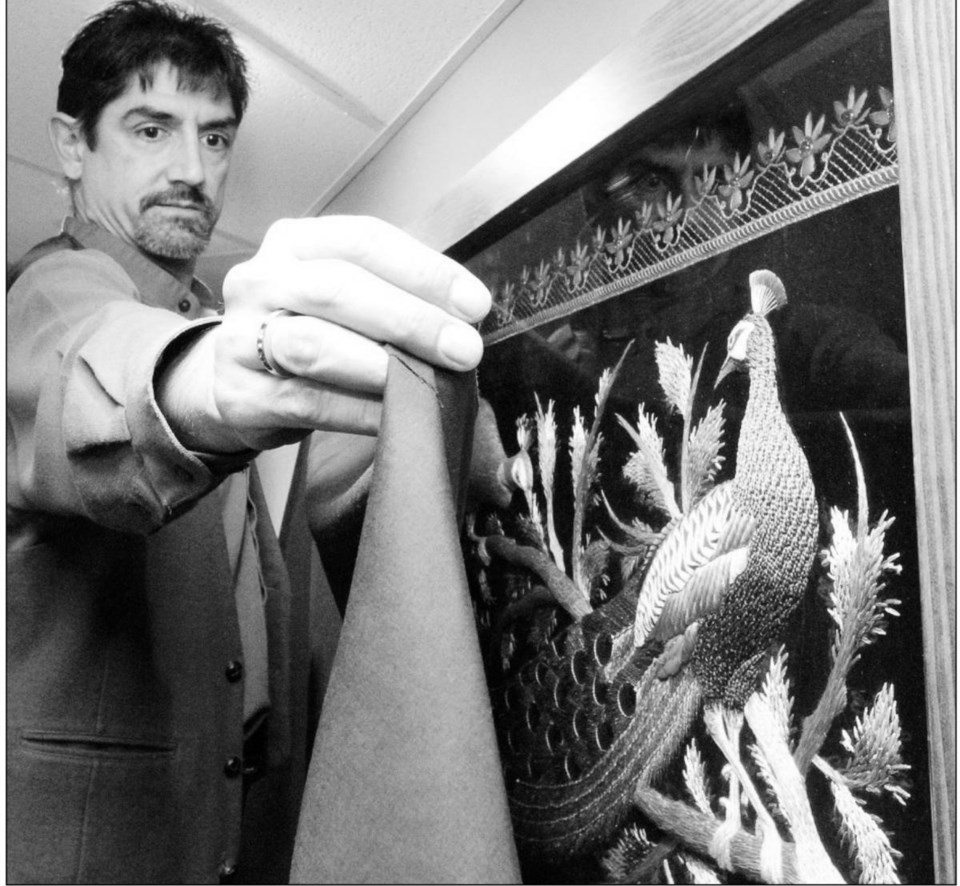Artworks around Victoria will be draped in black Saturday as a symbolic reminder of the cost of HIV/AIDS to the creative community.
A Day Without Art coincides with World AIDS Day and is held in cities around the world. "It's another visual symbol to say that HIV is still with us," said Michael Yoder, who spearheaded the event as executive assistant at the Victoria AIDS Resource and Community Service Society. "And when an artist dies, we lose their art."
Arts and HIV/AIDS organizations across the U.S. launched the first Day Without Art in 1989 as a national day of action. That year, hundreds of participants closed museums and galleries, sponsored special shows tackling the subject of disease or sent staff to volunteer with community organizations. Today, an estimated 8,000 organizations host similar events.
Victoria held its first Day Without Art in 1993. Yoder's society and Vancouver Island Persons Living with HIV/AIDS Society are reviving the tradition with the support of the city's artists and galleries.
For this Day Without Art, Polychrome Fine Art on Fort Street plans to black out its entire space, while other participating galleries will cover selected pieces.
They include the Legacy Art Gallery, Madrona Gallery, Studio J Art Space, Dales Gallery and the Sukhi Lalli Care Clinic lobby.
Artists Linny D. Vine, Dale Roberts, Bertrand Dion, Shawn Shepherd, Jeffrey Boron, Gillian Cornwall and Roger Neisman have donated works to a silent auction.
Visitors can bid at participating galleries and proceeds will be divided between the two HIV/AIDS societies, in support of programs and services for people living with HIV.
While the focus is on visual arts, Yoder said HIV/AIDS has taken its toll in other creative areas, from talented cooks to music lovers. "Productivity in our community is lost," he said.
Previous arts-friendly local events hosted on World AIDS Day have included offers of free hugs and a flash mob at the Bay Centre, where participants sang This Little Light of Mine.
"It's not just about death and dying. People living with HIV are vibrant members of the community," Yoder said.
There are around 1,500 reported cases of HIV on Vancouver Island, according to Craig Dales, executive director of Vancouver Island Persons Living with HIV/AIDS Society.
Numbers are either steady or decreasing in the province, which Dales largely attributes to the treatment and prevention programs provided by the B.C. Centre for Excellence in HIV/AIDS since 2010.
The 289 cases diagnosed in B.C. in 2011 is the lowest number on record, according to the B.C. Centre for Disease Control.
The news isn't all good, however. Up to 65,000 people in Canada are living with HIV, said Dales. But about one quarter don't know it, because they have not been tested.
The most worrying numbers are for youths ages 18 to 25, he said. "The message isn't getting out there in the schools and they're the ones that we really need to target."
Events like Day Without Art are one way to spread awareness. "A lot of people think it's a done deal, because of the meds," said Dales. "It's not often spoken about."
asmart@timescolonist.com



